Tomatoes are a staple in many gardens, loved for their juicy fruit and versatility in the kitchen. However, growing the perfect tomato crop isn’t always easy. The key to success often lies in companion planting—choosing plants that work together harmoniously to improve growth, deter pests, and enhance flavor. If you’ve ever wondered which plants go well with tomatoes, this article is for you! We’ll explore 15 companion plants that can boost your tomato yield and health, and highlight 5 plants you should avoid to prevent any setbacks.
In This Article
- Deter Pests and Diseases, Attract Beneficial Insects
- Garlic
- Marigold
- Chives
- Nasturtium
- Basil
- Improve Soil Structure, Nutrients, Tomato Flavor
- Lettuce
- Sugar Snap Peas
- Carrot
- Pole Beans
- Asparagus
- Similar or Non-Competing Space, Conditions, Growth Habit
- Beets
- Rose
- Pumpkin
- Sunflowers
- Celery
- 5 Plants Never to Grow Near Tomatoes
Deter Pests and Diseases, Attract Beneficial Insects
Garlic (Allium sativum)
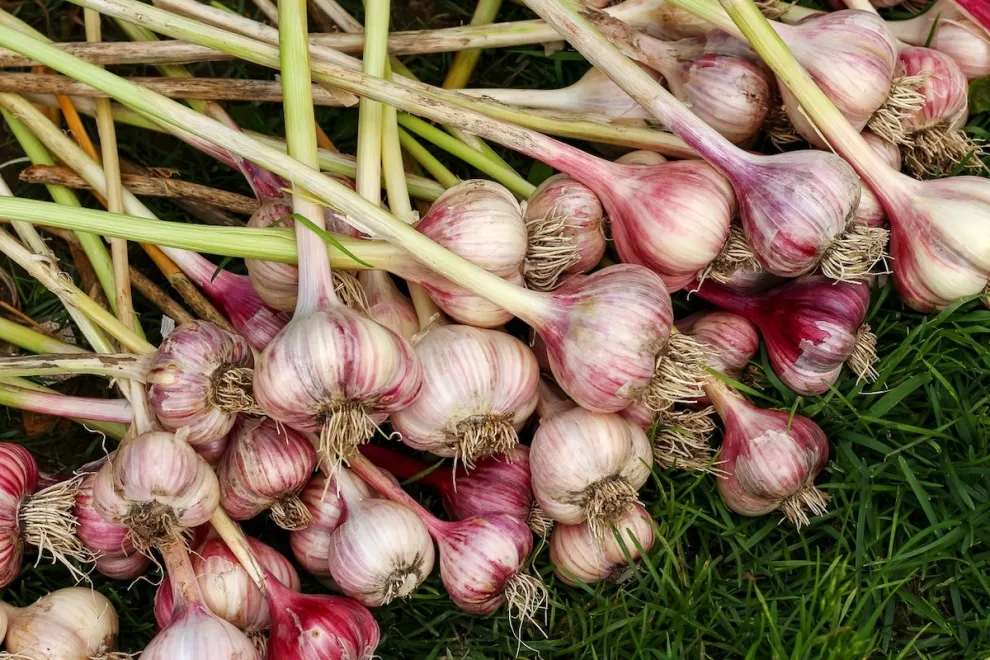
Garlic is a wonderful companion plant for tomatoes, as it has natural pest-repellent properties. Its strong scent helps keep aphids, spider mites, and other harmful insects away from your tomato plants. Additionally, garlic has antifungal and antibacterial properties, which means it can help reduce the risk of soil-borne diseases like blight, a common issue for tomatoes. Simply plant garlic near your tomatoes, and the garlic will work its magic, protecting your precious crop.
Why It Works:
- Garlic repels aphids, spider mites, and other pests.
- It has antifungal properties, helping to reduce blight and other tomato diseases.
- Garlic grows well in the same conditions as tomatoes, requiring similar sunlight and water needs.
Marigold (Tagetes spp.)
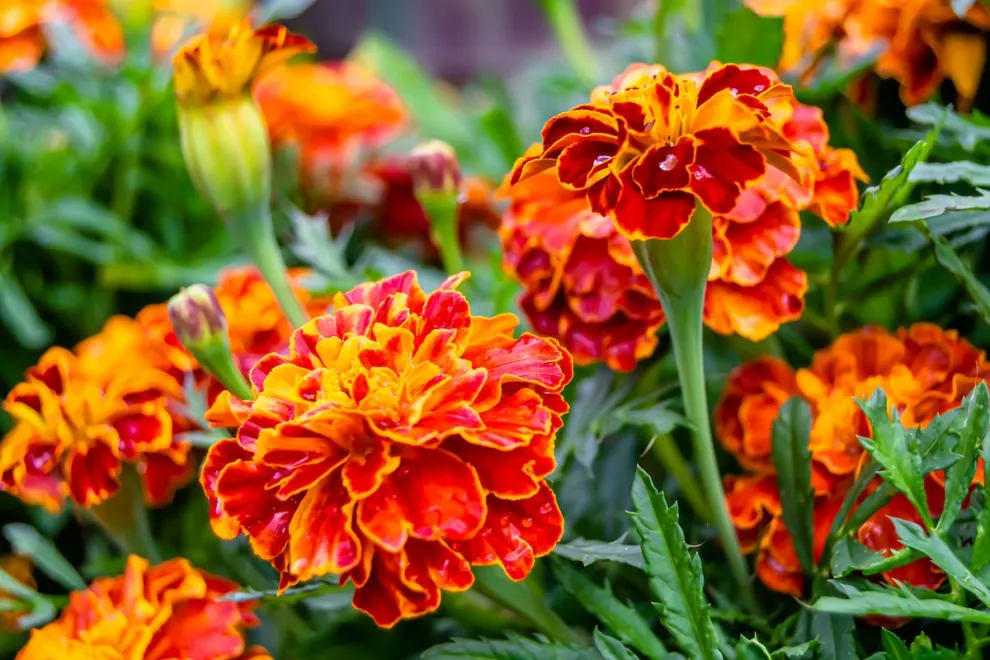
Marigolds are often considered one of the best companion plants for tomatoes. These bright and cheerful flowers do more than just add color to your garden—they also help deter pests. Marigolds release a pungent smell that repels nematodes, whiteflies, aphids, and other common tomato pests. The plants also attract beneficial insects like ladybugs, which feast on aphids and other harmful insects. Plus, marigolds grow well alongside tomatoes without competing for space or nutrients.
Why It Works:
- Marigolds release a scent that repels nematodes, aphids, and other pests.
- They attract beneficial insects like ladybugs and pollinators.
- Marigolds’ vibrant colors brighten up your garden while keeping pests at bay.
Chives (Allium schoenoprasum)
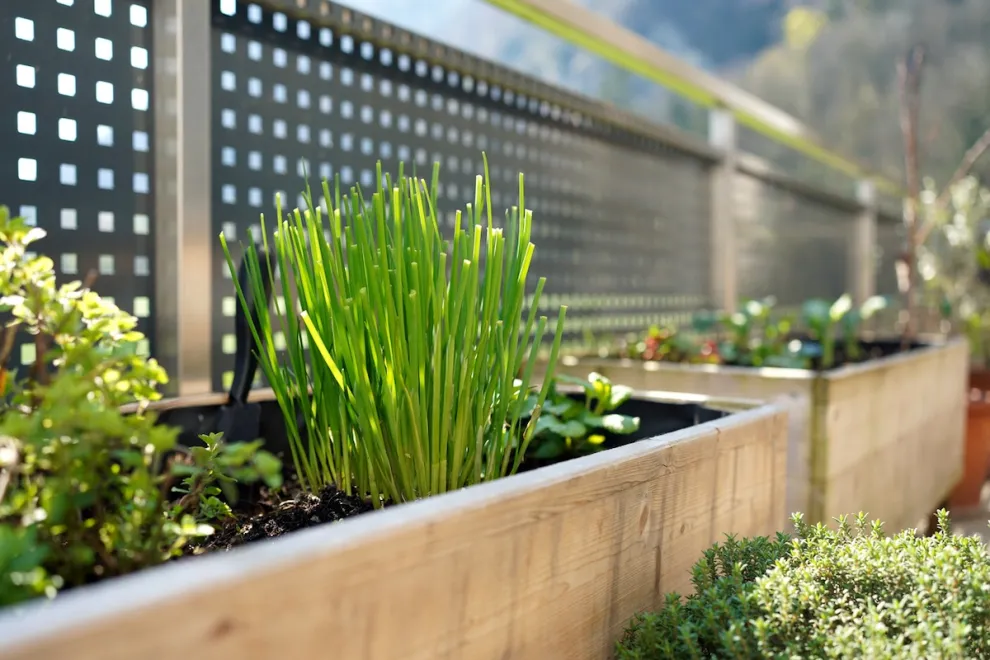
Chives are another excellent companion plant for tomatoes. These herbaceous plants can help keep aphids and Japanese beetles away from your tomato plants. Chives have a similar strong scent to garlic, which acts as a natural insect repellent. Additionally, chives’ growth habit can offer shade to tomato roots, helping retain moisture in the soil. This is particularly beneficial during hot summer months when tomatoes are most vulnerable to heat stress.
Why It Works:
- Chives deter aphids, Japanese beetles, and carrot flies.
- Their scent helps keep pests away from your tomato plants.
- Chives’ roots can help retain soil moisture, which is important for tomatoes.
Nasturtium (Tropaeolum majus)
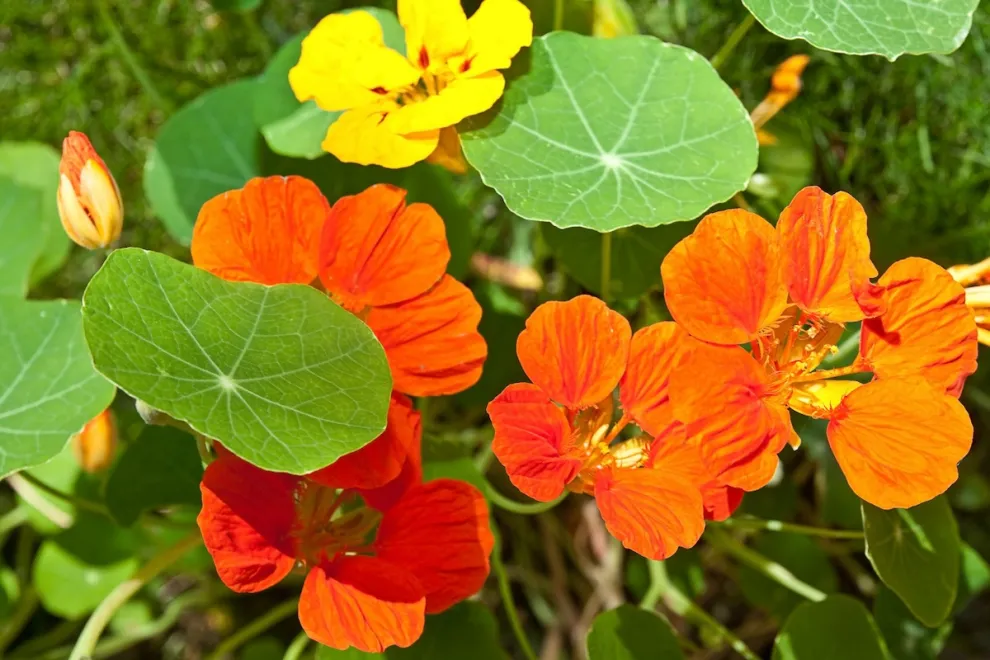
Nasturtiums are another powerful companion plant for tomatoes. These vibrant flowers act as a “trap crop,” meaning they attract pests away from your tomatoes. Aphids, whiteflies, and even certain beetles are drawn to nasturtiums, leaving your tomato plants safe from damage. Nasturtiums are also edible, and their peppery-flavored leaves and flowers can add a delightful kick to salads.
Why It Works:
- Nasturtiums attract aphids and other pests, protecting tomatoes.
- They act as a natural trap crop, drawing pests away from tomatoes.
- Nasturtiums are edible and provide an extra boost of flavor to your meals.
Basil (Ocimum basilicum)
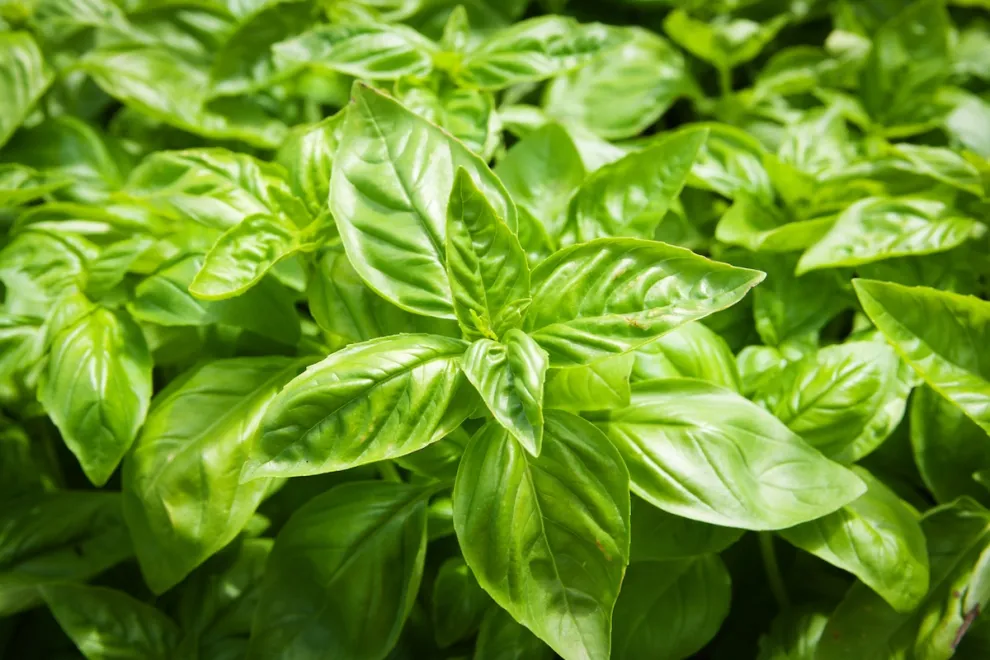
Basil is not only a fantastic herb for cooking but also an excellent companion plant for tomatoes. Growing basil alongside tomatoes can help deter pests like aphids, hornworms, and whiteflies. In addition, many gardeners believe that basil can improve the flavor of tomatoes when grown together. While this has yet to be scientifically proven, it’s certainly a great way to enhance your garden’s aesthetic and your meals.
Why It Works:
- Basil helps repel aphids, hornworms, and whiteflies.
- It may enhance the flavor of tomatoes when planted nearby.
- Basil and tomatoes share similar growing conditions, making them perfect neighbors in the garden.
Improve Soil Structure, Nutrients, Tomato Flavor
Lettuce (Lactuca sativa)
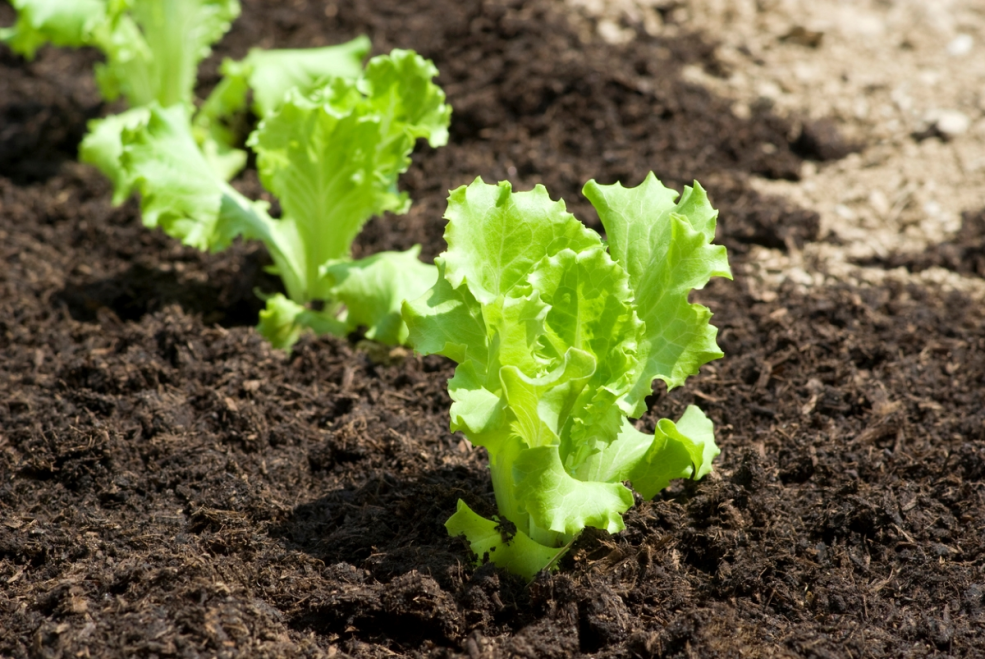
Lettuce is a fantastic companion plant for tomatoes because it grows quickly and doesn’t compete for space or nutrients. Lettuce’s shallow root system makes it an excellent companion for tomatoes, as it doesn’t interfere with the deep root structure of tomato plants. Additionally, lettuce benefits from the partial shade provided by the taller tomato plants, keeping its leaves cool and reducing the risk of bolting during hot weather.
Why It Works:
- Lettuce’s shallow roots don’t compete with tomatoes for nutrients.
- It thrives in the partial shade provided by tomato plants.
- Lettuce can help reduce weeds in the garden.
Sugar Snap Peas (Pisum sativum var. macrocarpon)
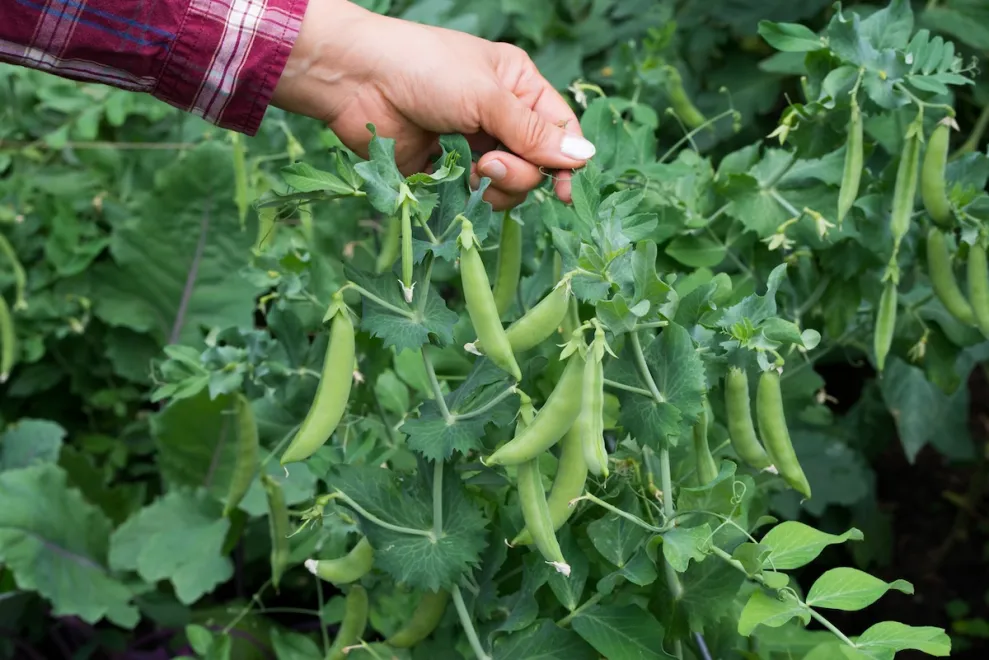
Sugar snap peas are a great companion for tomatoes because they help improve soil quality. Peas are nitrogen-fixing plants, meaning they absorb nitrogen from the air and convert it into a form that other plants can use. This helps enrich the soil and ensures that your tomato plants have access to this important nutrient. Additionally, the climbing vines of peas can add vertical interest to your garden without interfering with the growth of your tomatoes.
Why It Works:
- Peas are nitrogen-fixers, enriching the soil with this essential nutrient.
- Their vertical growth habit doesn’t compete with tomatoes for space.
- Peas can improve soil structure, benefiting all the plants around them.
Carrot (Daucus carota subsp. sativus)
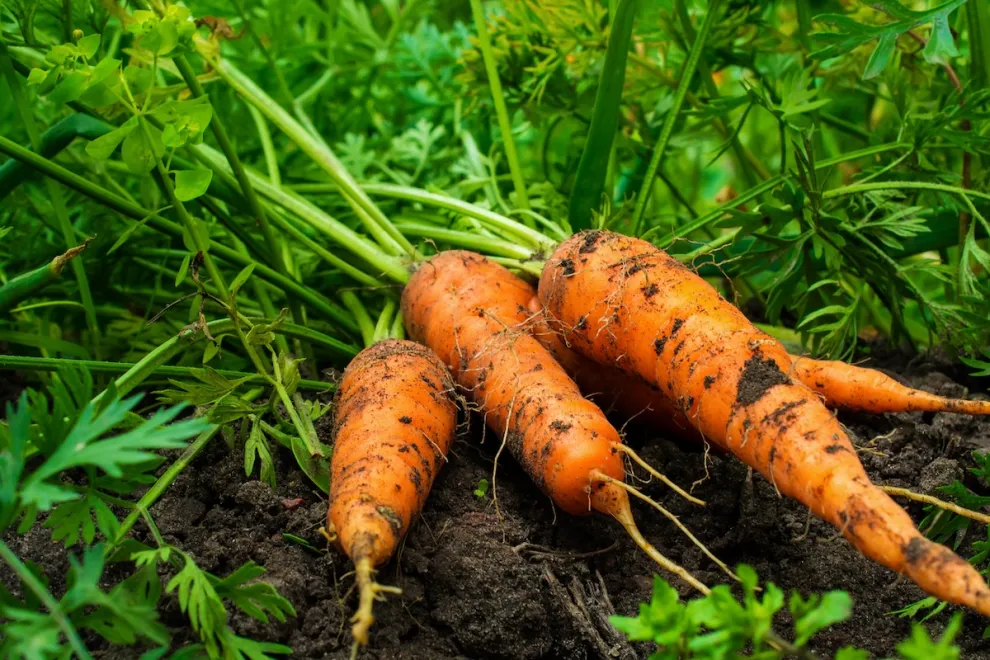
Carrots are another great companion for tomatoes. Their deep-growing root system helps to loosen compacted soil, allowing for better root penetration of tomato plants. While carrots and tomatoes don’t directly help each other in terms of pest control, their growth habits complement each other well. Carrots can grow in the soil while the tomatoes provide some shade during the hotter months, making for a productive and healthy garden.
Why It Works:
- Carrots’ deep roots loosen the soil, which benefits tomatoes.
- Tomatoes provide shade to carrots, preventing them from overheating.
- Carrots don’t compete with tomatoes for nutrients.
Pole Beans (Phaseolus vulgaris)
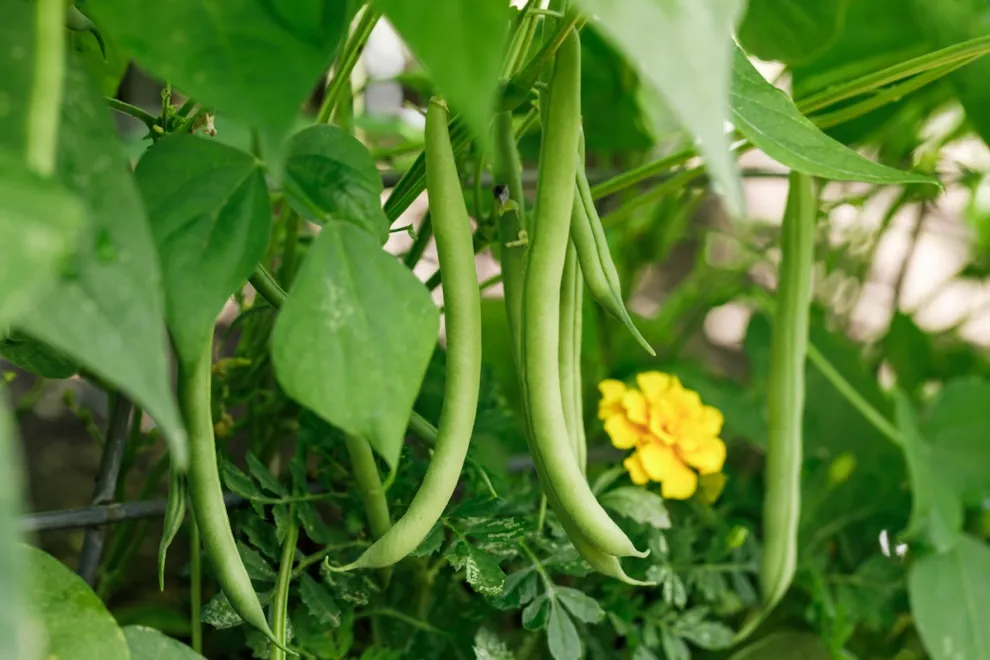
Pole beans are another nitrogen-fixing plant that can be beneficial for tomatoes. By enriching the soil with nitrogen, they help ensure that your tomatoes have access to the nutrients they need to grow strong and healthy. Pole beans also grow vertically, meaning they won’t compete for space with tomatoes. This makes them ideal for small gardens or for gardeners looking to maximize their space.
Why It Works:
- Beans fix nitrogen in the soil, which benefits tomato plants.
- Pole beans grow vertically, so they don’t compete with tomatoes for space.
- Their climbing vines add structure to the garden and help support tomatoes.
Asparagus (Asparagus officinalis)
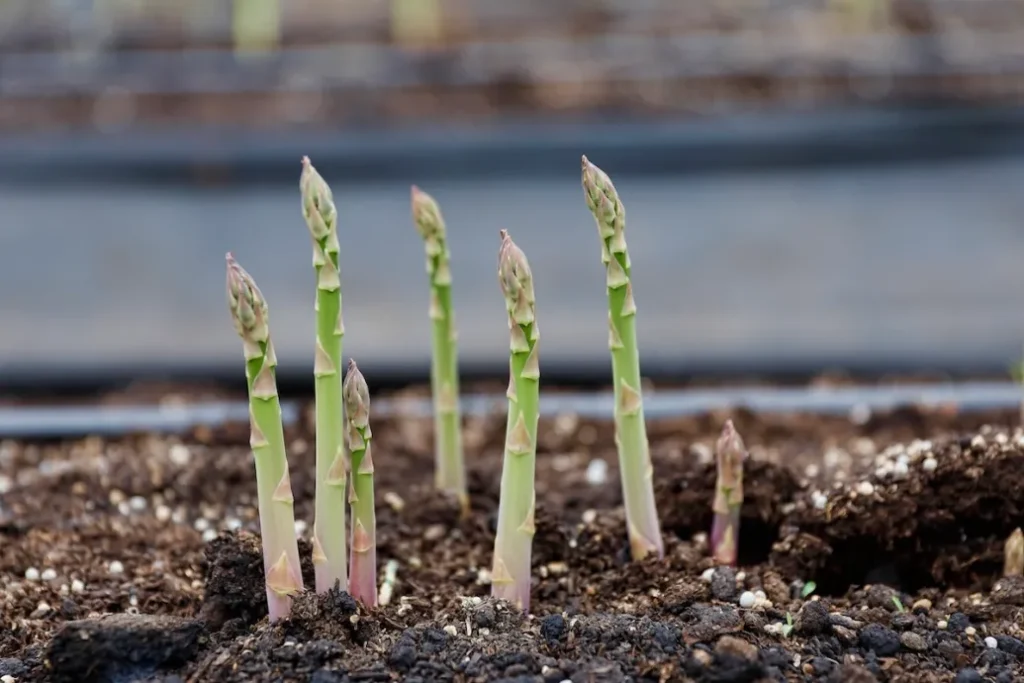
Asparagus and tomatoes form a symbiotic relationship in the garden. While tomatoes grow and produce fruit, asparagus benefits from the shade provided by tomato plants. Additionally, tomatoes release solanine, a compound that can help deter asparagus beetles, a common pest of asparagus. Conversely, asparagus produces a compound that is toxic to root-knot nematodes, which can harm tomato plants. This mutually beneficial relationship helps both plants thrive.
Why It Works:
- Tomatoes provide shade to asparagus during hot weather.
- Tomatoes release solanine, which repels asparagus beetles.
- Asparagus produces compounds that protect tomatoes from nematodes.
Similar or Non-Competing Space, Conditions, Growth Habit
Beets (Beta vulgaris)
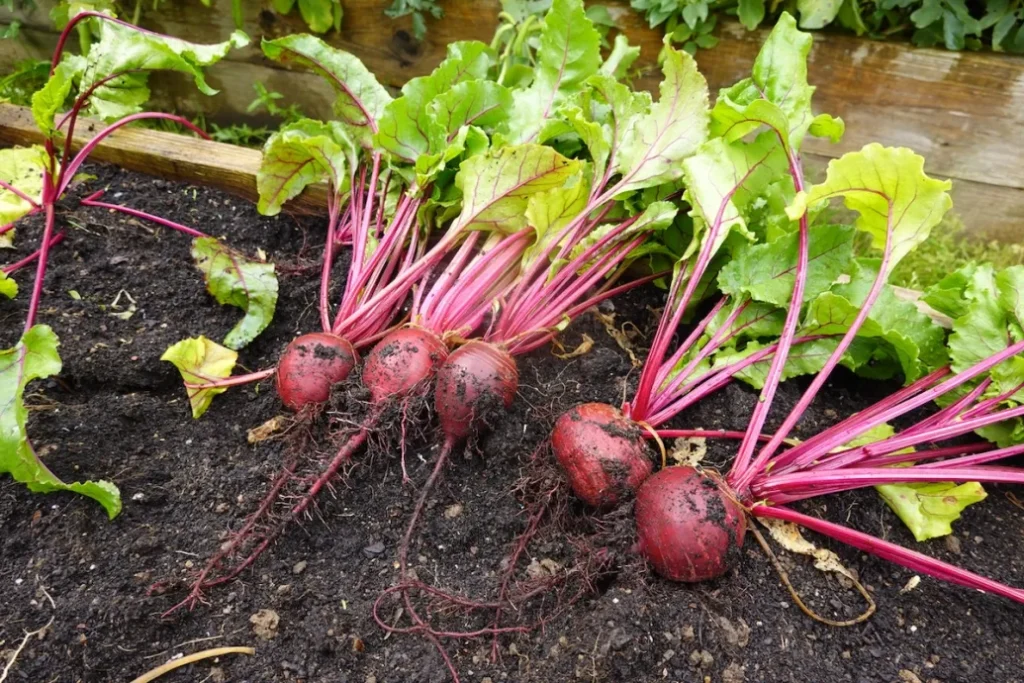
Beets are another great companion for tomatoes because they don’t compete for the same resources. Beets have deep-growing roots that help break up compacted soil, benefiting tomato roots. Additionally, beets can thrive in the partial shade that tomatoes provide, making them perfect neighbors. The foliage of beets adds color to the garden, and the roots can be harvested when they’re small, allowing your tomato plants to continue growing.
Why It Works:
- Beets help aerate the soil, which benefits tomato root systems.
- They grow well in the partial shade provided by tomato plants.
- Beets and tomatoes don’t compete for space or nutrients.
Rose (Rosa spp.)
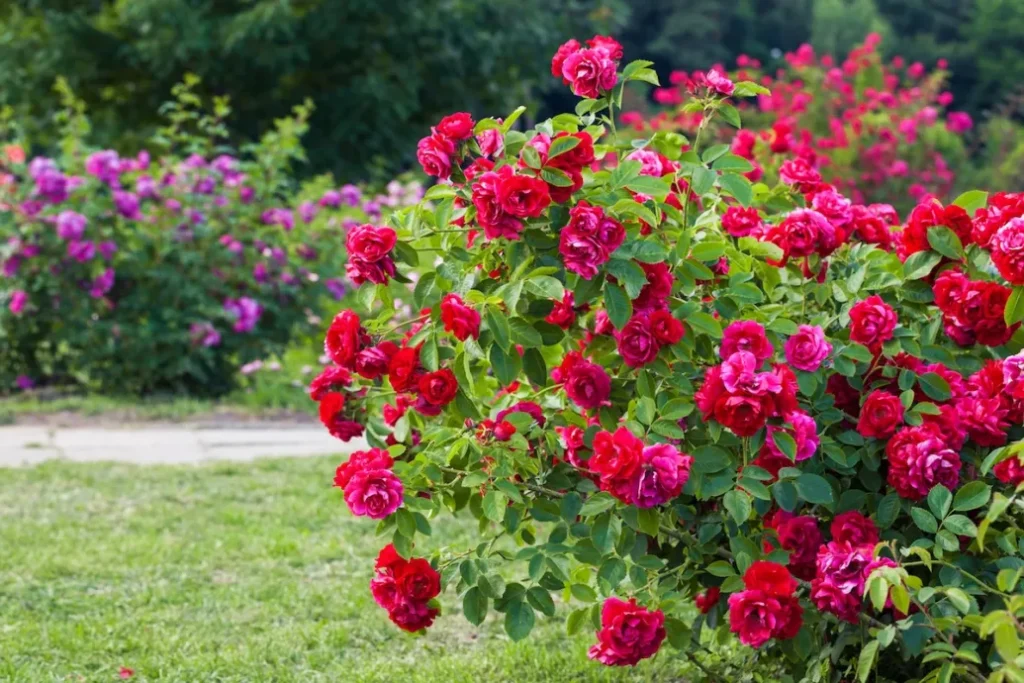
Roses are not only beautiful but can be beneficial companions for tomatoes. Both plants have similar water and sunlight needs, and they complement each other in the garden. Roses can attract beneficial insects like pollinators, which can help your tomatoes by ensuring a healthy crop of fruit. Additionally, roses and tomatoes often grow well together, without outcompeting one another for space or nutrients.
Why It Works:
- Roses attract pollinators, which can benefit tomato plants.
- Both plants have similar growing requirements, making them compatible neighbors.
- Roses don’t compete with tomatoes for space or nutrients.
Pumpkin (Cucurbita pepo)
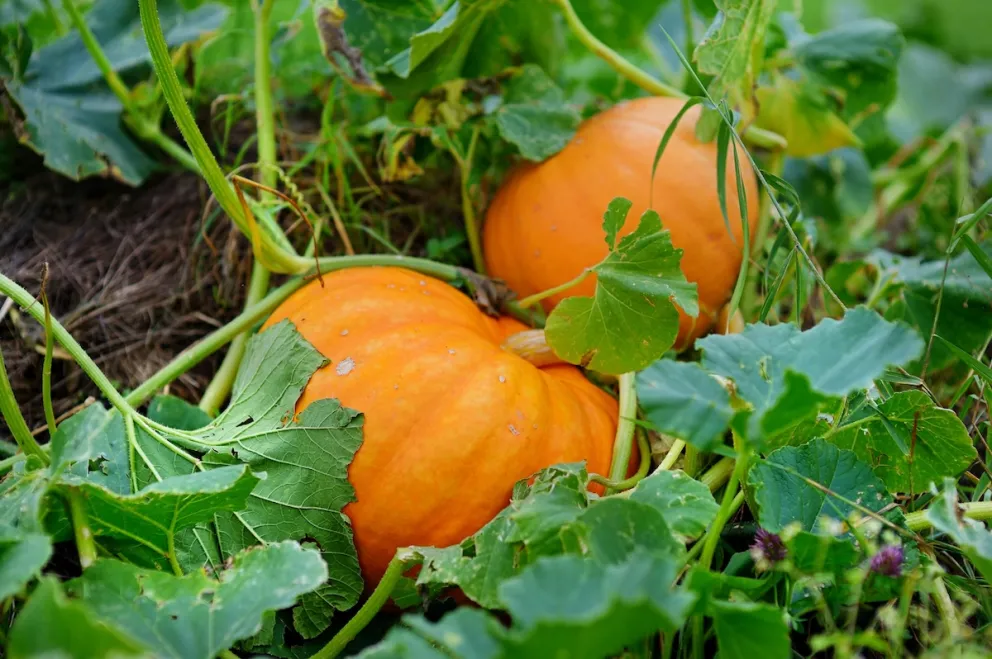
While pumpkins might take up a lot of space in the garden, they can still work well alongside tomatoes. The sprawling vines of pumpkins can help shade the soil, keeping it moist and reducing weed growth. Just make sure the pumpkins don’t overshadow the tomato plants, as they may block the sunlight that tomatoes need to thrive. When planted carefully, pumpkins can be a beneficial companion for tomatoes.
Why It Works:
- Pumpkins provide shade to the soil, helping to retain moisture.
- Their vines can act as a natural mulch to suppress weeds.
- Pumpkins and tomatoes can coexist if space is managed well.
Sunflowers (Helianthus annuus)

Sunflowers are excellent companions for tomatoes because they can act as a natural windbreak. The tall, sturdy stalks of sunflowers can help shield tomatoes from strong winds, reducing the risk of damage. In addition, sunflowers attract pollinators like bees, which can help improve tomato yields. Their bright yellow flowers also bring beauty to the garden, making them an aesthetically pleasing addition to your tomato plot.
Why It Works:
- Sunflowers attract pollinators like bees, which can boost tomato yields.
- The tall stalks act as a windbreak, protecting your tomatoes from damage.
- Sunflowers bring beauty to the garden while benefiting tomato plants.
Celery (Apium graveolens)
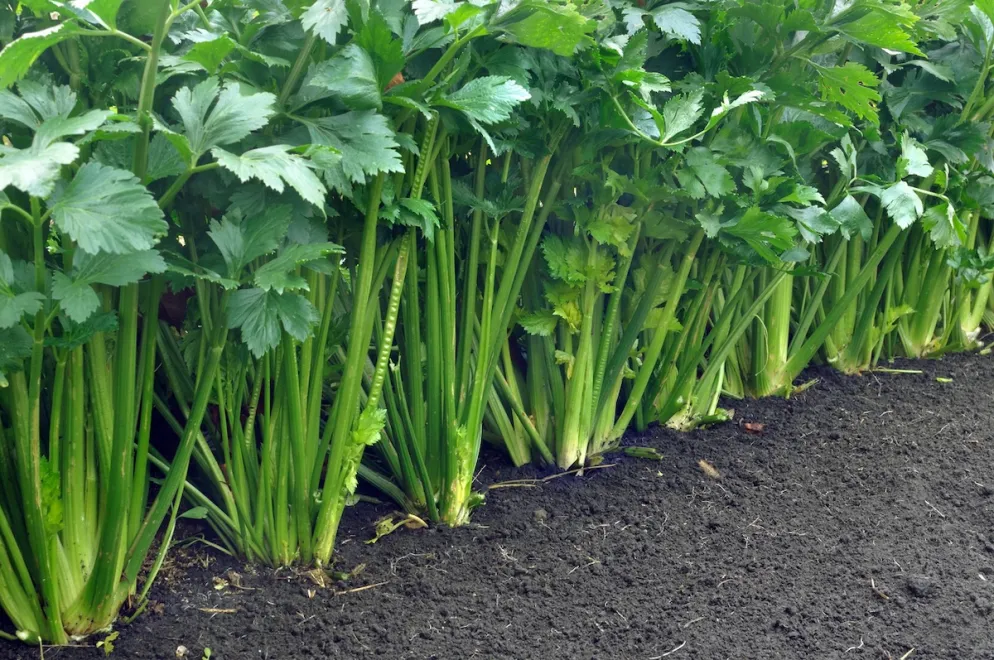
Celery and tomatoes share similar growing requirements, making them excellent companions. Both plants need regular watering and fertile soil to thrive. Celery’s upright growth habit won’t interfere with tomatoes’ spread, and its leaves can help protect the soil from drying out. Additionally, celery can help keep weeds at bay, reducing the competition for nutrients and space.
Why It Works:
- Celery and tomatoes have similar water and nutrient needs.
- Celery’s upright growth doesn’t compete with tomatoes for space.
- Celery helps keep the soil moist and free of weeds.
5 Plants Never to Grow Near Tomatoes
While some plants help tomatoes grow better, others can cause problems if planted too close. Avoid putting these near your tomato plants:
- Brassicas (like broccoli, cabbage, kale, cauliflower, and kohlrabi): These attract pests such as aphids and cabbage worms and also compete with tomatoes for nutrients in the soil.
- Corn: Both corn and tomatoes attract the same pests and diseases, which can spread more easily if they’re planted together.
- Potatoes: These share similar growing needs and compete for nutrients, but more importantly, tomatoes can increase the risk of potato blight.
- Tobacco: This plant can carry the tobacco mosaic virus, which spreads easily to tomatoes. Even tobacco users should wash their hands before touching tomato plants.
- Fennel: Fennel releases chemicals that slow down the growth of other plants nearby. It’s best kept out of the vegetable garden altogether.
Final Thoughts
Companion planting is a simple yet effective way to improve your tomato harvest. By carefully selecting plants that complement each other, you can create a thriving, healthy garden. While it’s important to know which plants to grow near tomatoes, it’s just as crucial to avoid certain plants that can hinder their growth. With the right combination of companions, you’ll enjoy a bountiful tomato crop and a flourishing garden! Happy planting!




